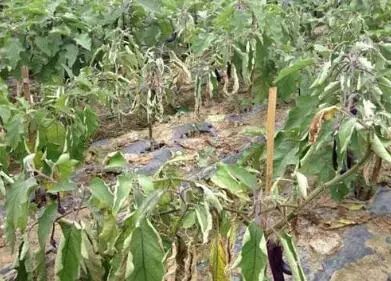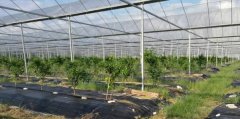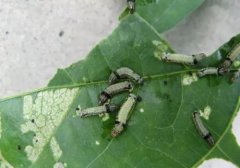The importance of biological control of plant diseases and the biological control methods of plant diseases
The application and prospect of biological control of crop diseases, is that what you do? Want to know? What are the application and development directions of biological control in plant diseases? So how do you do it? what's the method? Let's take a look at it.

The application and development direction of biological control in plant diseases include:
(1) discussion on disease-suppressing soil:
Generally speaking, the existence of disease-inhibiting soil, with a few exceptions, is mostly related to existing soil microorganisms. Therefore, the main direction of its research and application is how to improve the original effective microorganisms or the application of disease-inhibiting soil to protect crops, so as to achieve the effect of reducing diseases.
(2) the addition of organic matter:
Proper use of organic additives can increase the original microorganisms or artificially introduced antagonistic microorganisms in the soil, and then strengthen the bacteriostatic function of the microorganisms or increase the disease resistance of crops themselves, so as to reduce the occurrence of crop diseases. However, the use of additives must pay attention to the interaction between the whole ecosystem, such as crop pathogens, antagonistic microorganisms and other microorganisms, so as to avoid negative effects.
(3) direct introduction of antagonistic microorganisms:
A. the main mechanisms of antagonistic microorganisms for disease control can generally be classified into the following five categories:
1. Namely the production of antibiotics (antibiotic production)
two。 Nutrition competition (competition for nutrients)
3. Microparasites (mycoparasitism),
4. Cell wall decomposing enzyme (cell wall degrading enzymes)
5. Induce plants to develop resistance (induce systemic acquired resistance).
Generally speaking, although the above mechanisms may vary slightly according to different antagonistic microbial species (species) or strains (strain), the disease control mechanism may usually contain more than one.
B. to use a single antagonistic microorganism or a variety of antagonistic microorganisms to control crop diseases requires a clear understanding of the ecology of the whole crop, pathogens and antagonistic microorganisms.
At present, the antagonistic microorganisms used for plant diseases mainly include Agrobacterium radiobacter strain 84 to control tumor disease, fluorescent pseudomonas (Fluorescent Psedudomonads) to control crop seed treatment and root nodule disease, and actinomycetes (Streptomyces spp.,) and Penicillium gelatinosa (Gliocladium spp.,) to control many diseases.
- Prev

Net room greenhouse: the prevention and control of diseases and insect pests, what is the control method of diseases and insect pests?
Do you know the biological control of crop pests cultivated in the net room? What are the reasons for the occurrence of pests in the net room? What are the reasons for the difficulties in pest control in net rooms? What are the advantages of net room biological control? Let's take a look at it. Get to know it. From the past
- Next

What are the natural enemies of insects? What are the natural enemies of insects? lacewings.
What are the natural enemy insects, what characteristics do they have, and what do they mainly eat? using natural enemy insects to control pests is a special control method, which can reduce environmental pollution and maintain ecological balance. Remarkable achievements have been made in the propagation and utilization of natural enemy insects in China.
Related
- A one-day flower show brings 130 million yuan in orders! Nanhai, this Phalaenopsis exhibition is amazing
- What do the flower language and meaning of Lutheran tree mean? Precautions for planting Lutheran tree
- Encounter Chaoshan Kongfu tea, not without this cup of Phoenix single clump
- The durian market in Vietnam and Thailand is flooded. The price of imported durian has plummeted by 30-40% in a month.
- Shanghai solved the problem of local vegetable supply by planting 80,000 mu of green leafy vegetables.
- Wageningen University has become the best agricultural university in the world for the seventh time in a row.
- The strongest export season of South African grapes is full of challenges, with exports to Russia falling sharply by 21%.
- Sri Lanka is on the verge of bankruptcy, "Tea for debt" Organic Agriculture Revolution aggravates the Food crisis?
- Turning waste into earthworm manure and worm manure into organic fertilizer-A new choice for auxiliary farming
- Organic rice growers shoulder the responsibility of nurturing agricultural talents! Yinchuan Sustainable Farm with Organic Life Camp

